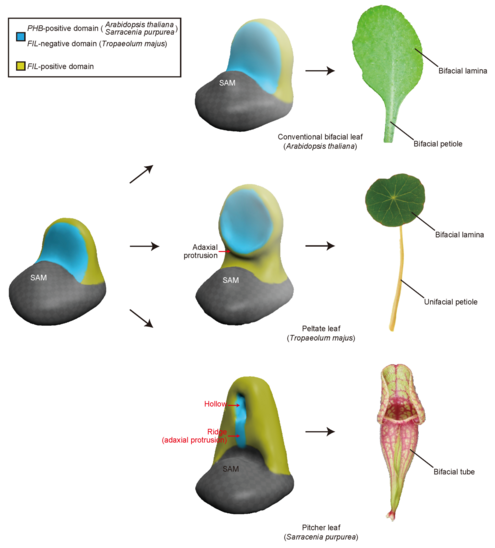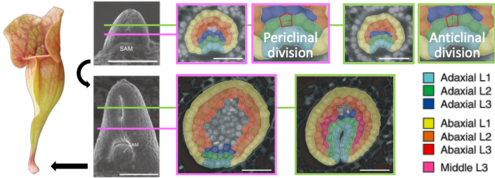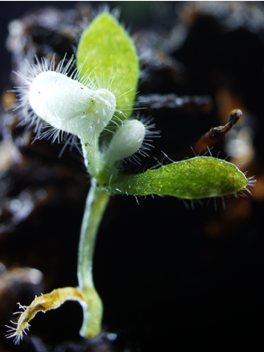Leaf development
Leaf development
Although successive phenotypic changes are explained by accumulation of mutations, how drastic morphological evolution is attained remains unclear. In the evolution of carnivorous plants, ancestral flat leaves were modified into a complex pitcher shape. To understand the developmental mechanisms of pitcher leaves, we analyzed leaf development of American pitcher plant Sarracenia purpurea. Although such developmental modifications have been believed to be achieved by changes in adaxial-abaxial polarity in early leaf development, the pitcher leaves showed standard expression patterns of adaxial and abaxial marker genes. Instead, pitcher primordia developed through a differently oriented cell division in adaxial tissues. This work provided previously undescribed mechanisms of drastic morphological evolution through tissue-specific changes in cell division orientation.
We will tackle this problem also using the Australian pitcher plant Cephalotus follicularis. To find a clue to genetic bases of pitcher leaf evolution, we sequenced the nuclear genome of the Australian pitcher plant Cephalotus follicularis in collaboration with an international team. This plant produces both carnivorous pitcher and non-carnivorous flat leaves, enabling us to deduce the morphological evolution by comparative approaches in a single species. we developed culture methods to control the developmental fates of the two types of leaves and established a gene-silencing method in vivo. Using these newly developed techniques in combination with genomic information, we identified genes that regulate pitcher leaf development, which will be subjected to in-depth characterization.











